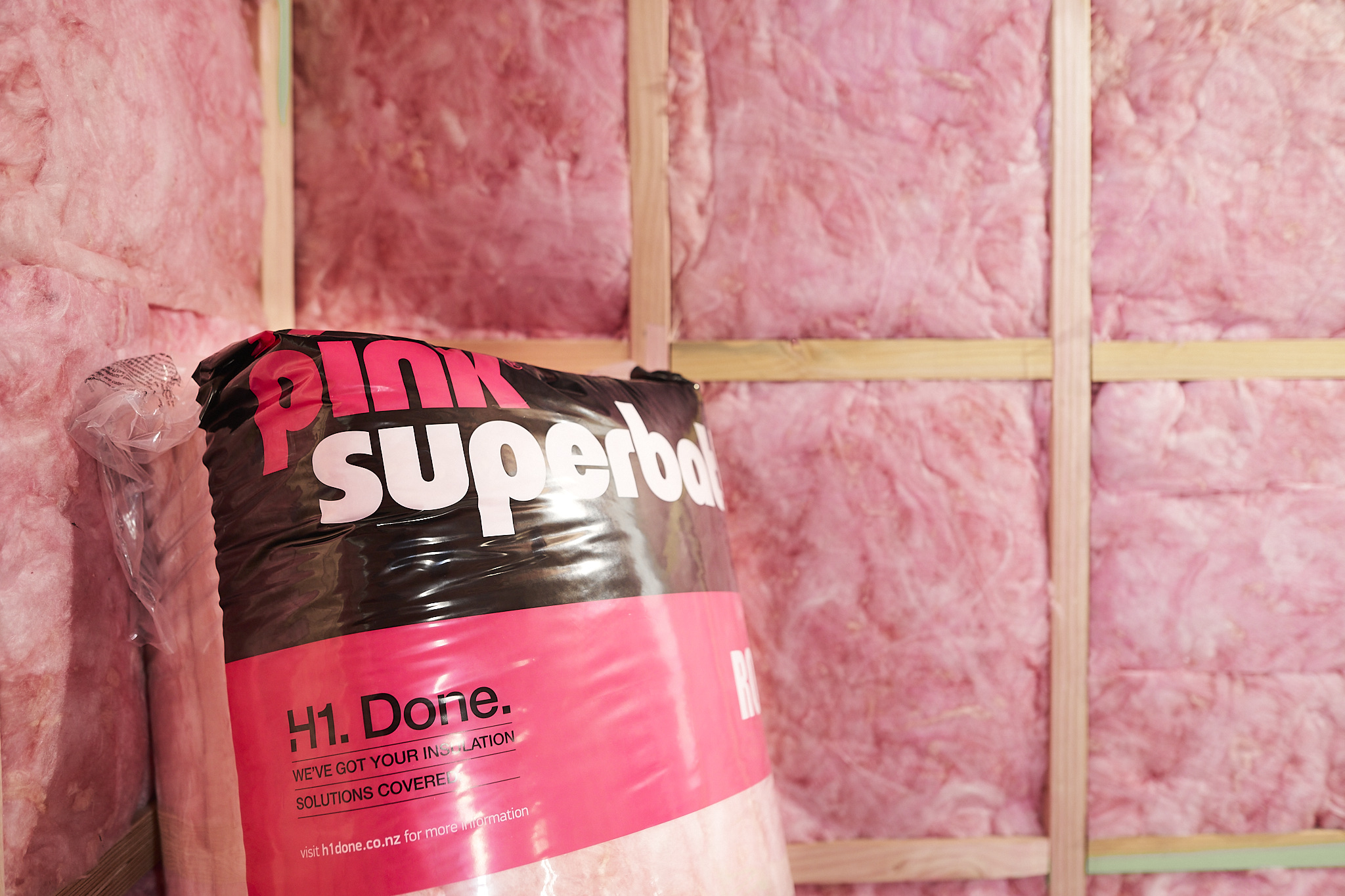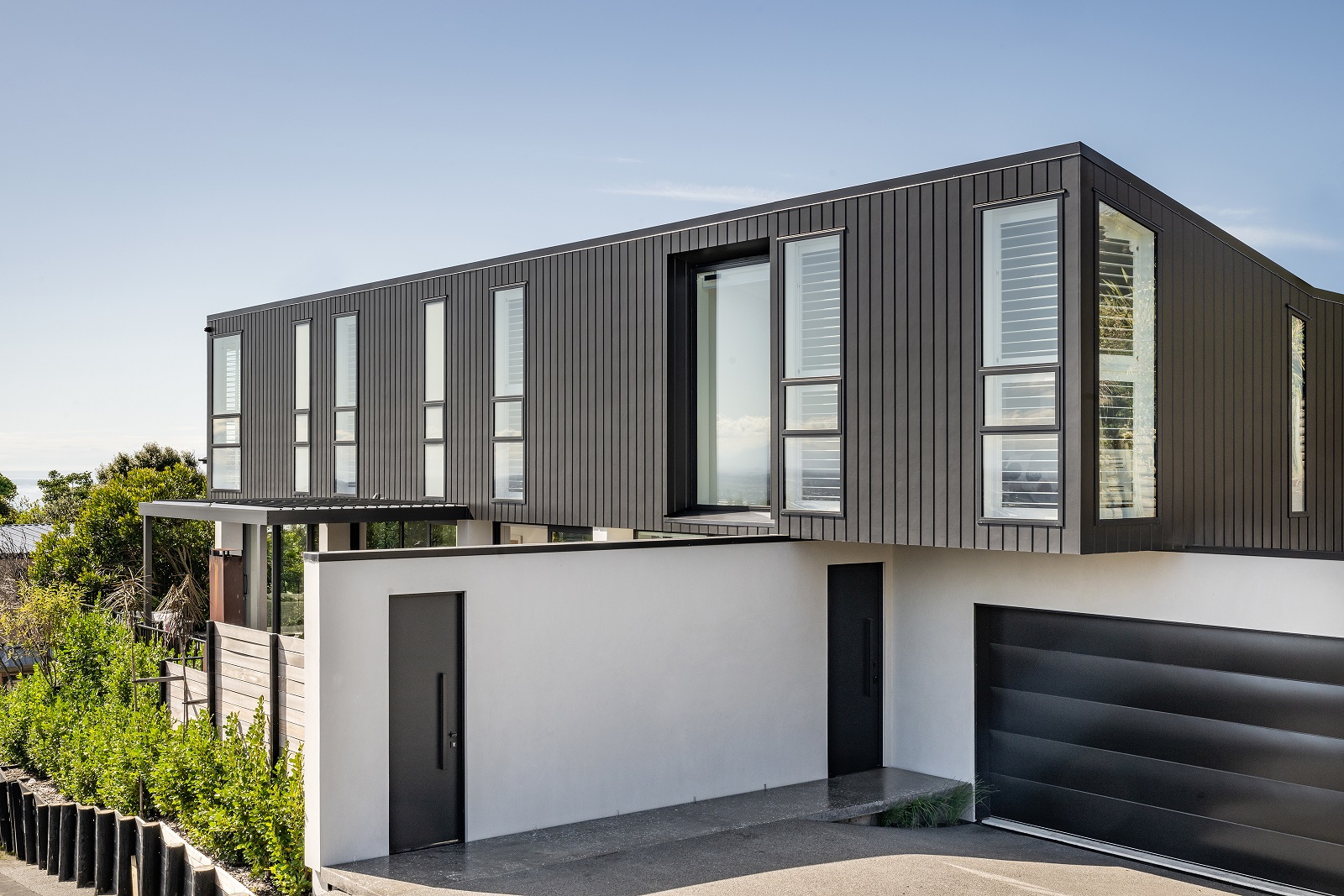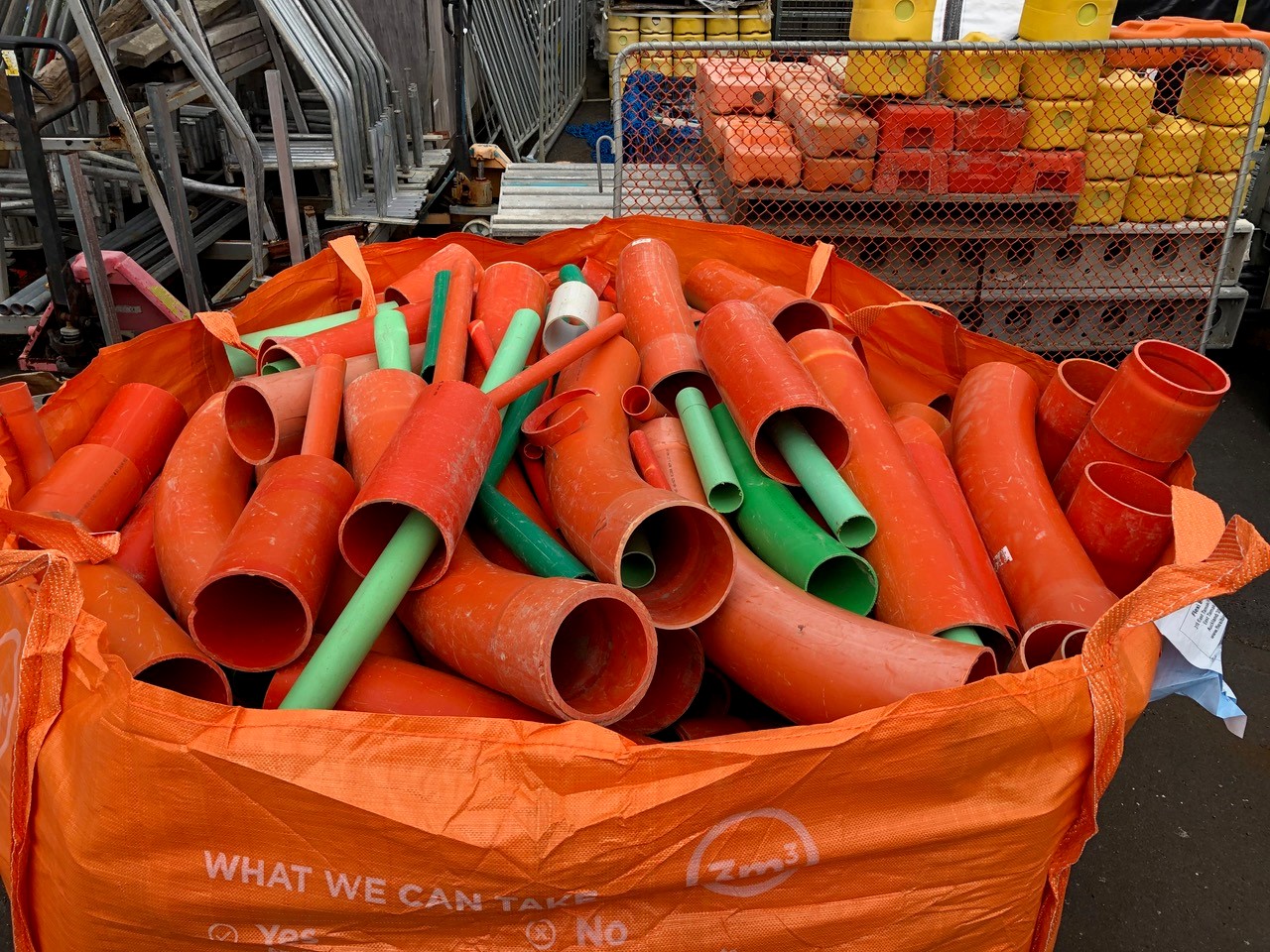Bosjes Chapel sits within a vineyard in South Africa’s Western Cape. Its form is said to echo the profile of the surrounding mountain ranges. The design also references the Bible’s Psalm 36:7 – “How precious is your steadfast love, O God! The children of mankind take refuge in the shadow of your wings”.
The designers looked at Moravian mission stations which emphasise horizontal forms. It is also possible to see echoes the Cape’s traditional Dutch gables, and even the white headgear of women who served in lay religious orders as medieval beguines in the Low Countries.
Whatever the inspiration, the serene scupltural folds of the whitewashed shotcrete belie the very real challenges faced in building the chapel.
Designed by South-African-born Coetzee Steyn of London-based architect Steyn Studio, the six-metre-high building was conceived as a “lightweight, dynamic structure which appears to float within the valley”, A shallow pond surrounds the structure, and its reflections add to the illusion that the chapel is hovering just above ithe water. The whole conveys a dramatic sense of light and motion.
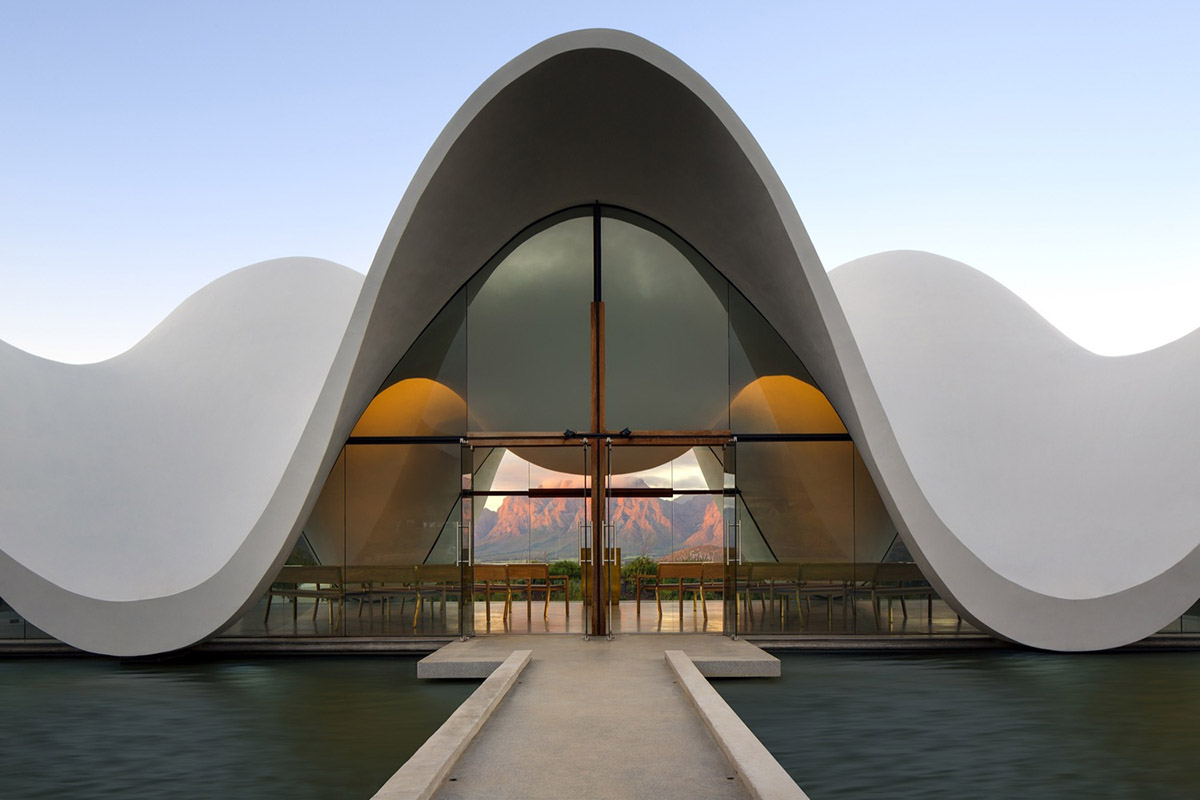
Built from a shotcast concrete shell, the roof rises and falls to create six peaks – one at each corner of the chapel and one in the centre of each long elevation. The roof becomes the walls and columns of its own supporting structure. It is supported at four points where it falls dramatically to ground level. The interior glazing is framed by simple timber crucifixes.
The concrete formwork was designed as a system of prefabricated wooden trusses supporting a bent plywood skin. A 1:50 replica was created in the yard of a Cape Town contractor and proved invaluable for planning purposes, helping finalise construction details. It would later take almost five months to construct the formwork on site.
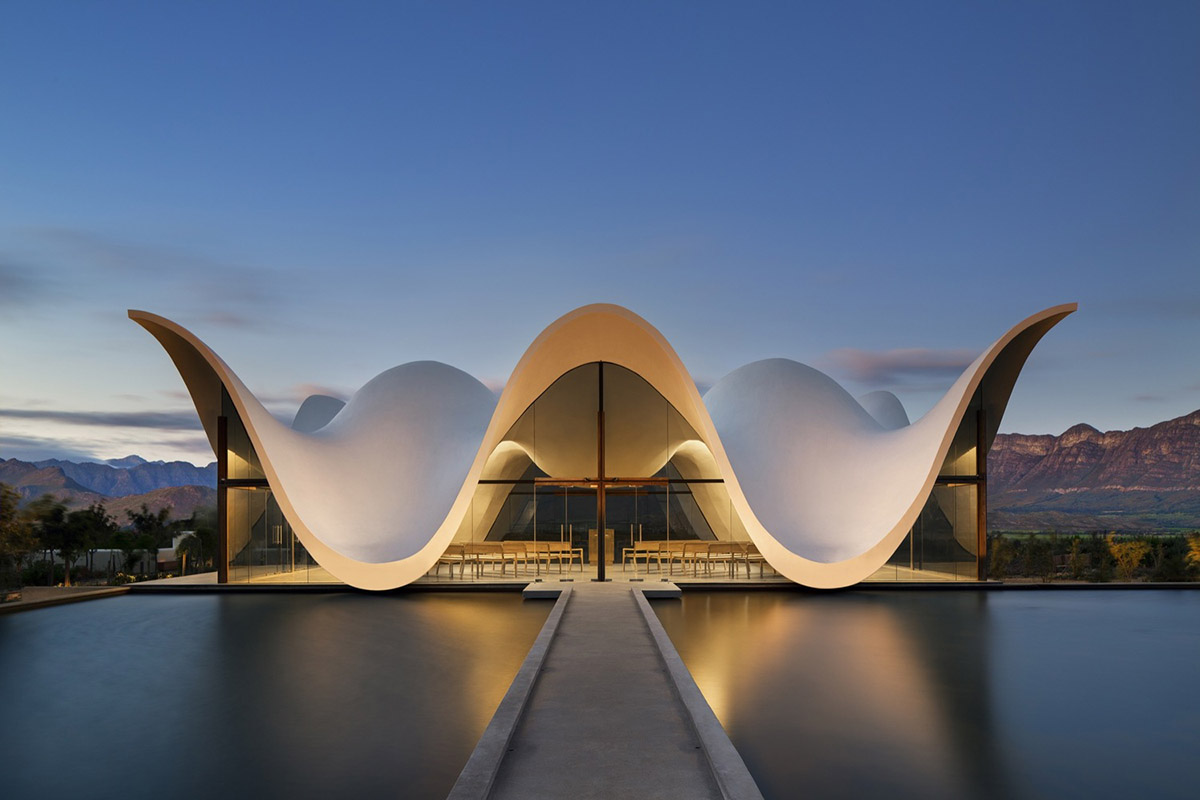
Three dimensional CAD models were used to calculate material volumes. The shell required 74 cubic metres of concrete and 8175 kg of high tensile steel reinforcement.
Concrete was shot at high velocity through a hose. This had to be done from mobile platforms, and was frequently delayed by strong winds and rain, taking six weeks rather than the two that had been planned for.
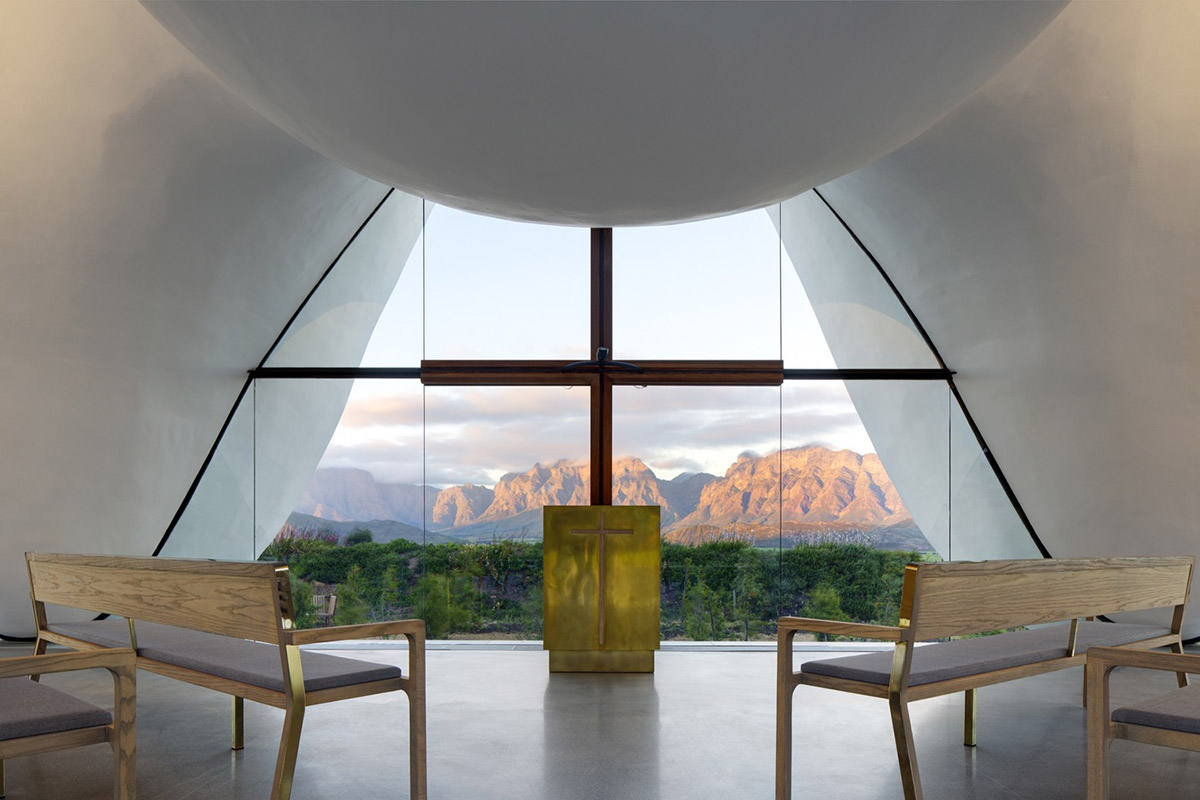
The chapel’s roof and floor are completely separated to allow thermal movement. A service channel around the structure’s perimeter mediates at the junction where the glass meets the floor.
Simple benches within the chapel keep details to a minimum and services which might otherwise clutter the calm interior are located within the structure’s base.
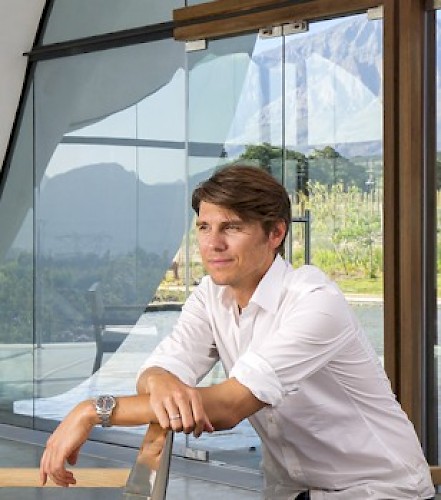
Coetzee Steyn

